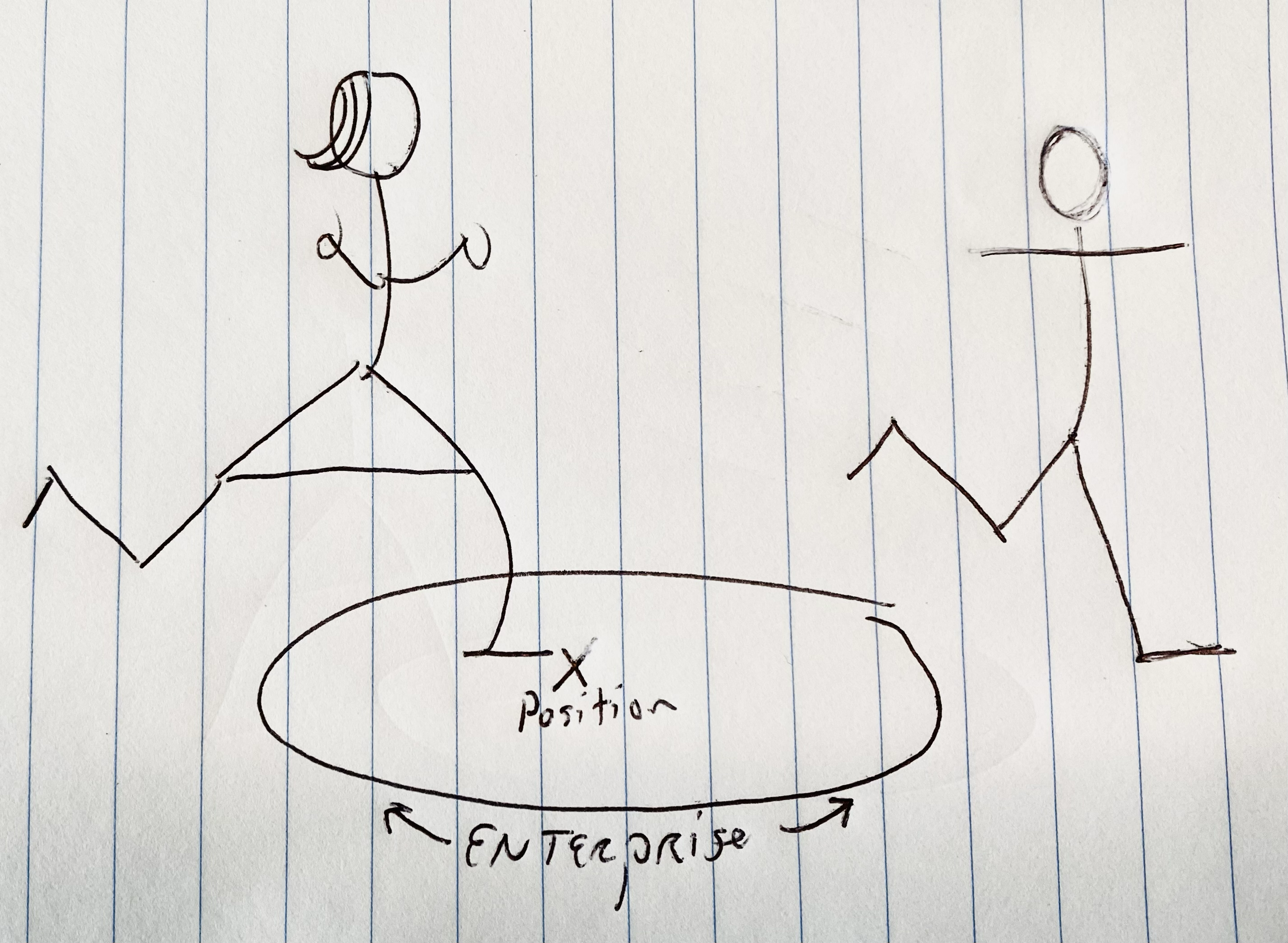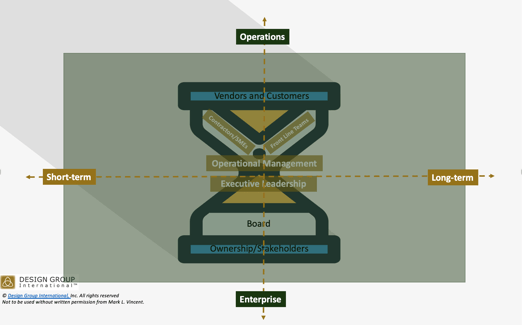When an outgoing executive leader hands the baton to their successor, there are so many risks. Each risk, if not addressed, brings a decline to the current and future value of the enterprise. The value of the organization dips almost immediately, and many never recover.
A frequent reason for the decline in value at the point of succession is the risk of different perceptions between the departing leader and the incoming successor.
The departing leader steps away from the enterprise.
The incoming leader steps into the vacated position.
Do you notice any difference between the two above statements?
Can you feel the difference between them?
Perhaps this scribbled diagram will convey the message more effectively.

A second dimension to this distortion of perceptions is:
- the successor thinks the departing leader is leaving the position they now fill
- The departing leader thinks the successor understands the enterprise they are leaving.
It is not long before the difference becomes visible, usually first to the departing leader and before anyone else. For instance: the departing leader may have a sense of when key customers are most available in the business cycle in a way that is not readily transparent to the successor. Or, the outgoing leader may have insight into how the capital structure was implemented. The successor can't glean this just by reading documents.
If the enterprise is to remain in stride to gain ongoing and future value, it faces a critical moment. The departing leader will need to decide how to convey information to the successor who has not yet experienced it and might not yet be able to perceive it and do so without enforcing or with an expectation that something must be continued because they established it. Conversely, the incoming leader must be comfortable with the space of not knowing and exercising curiosity rather than trying to lead out of what they believe they see because they learned it elsewhere.
Dangerous assumptions that the departing leader communicated everything or that the successor knows everything are costly ego mistakes. Succession and handoffs are not made simply because the successor accepted an offer of employment. There is as much work to do here as there was to start the business in the first place.
Here is a more detailed way to map this.

- The hourglass shape is one way to map the basics of a developing organization.
- The horizontal axis designates the timeline and the difference between short and long-term implications of leadership decisions.
- The shaded diagonal shows that the organization flows through time with the normal downward pressures (e.g., inflation, market competition) the firm has to strive against to move up and to the right.
- The vertical axis paints the differences and overlap between operational activity (performing the business as we know it) and enterprise-level activity (governing, strategizing, and leading the company toward what we do not yet know)
Most incoming leaders, moving from first to the second turn, spend their careers in the upper left quadrant, perhaps with some but limited insight into one or more of the other quadrants. Few have deep experience thinking about and acting on behalf of the entire enterprise.
Most outgoing and successful Second-Turn Leaders, usually through a school of hard knocks, have learned to think about all four quadrants in relationship with each other. They literally can feel it in their bodies and may have difficulty explaining or teaching what they know in their bones.
To have a happy Third-Turn, the departing executive works with their successor. If the incoming executive is to be sling-shotted into the future, they will need to assume that the departing executive is a well of knowledge that would require years to reacquire if lost. Together, they construct a bridge across the perception difference between stepping into the position and stepping away from the enterprise.
-mark l vincent
We are filling out the next Maestro-level leader cohort.
We'd love to talk to you!
Tags:
leadership succession, Mark L. Vincent, Design Group International, executive develpment, succession planning, Maestro-level Leaders, The Third Turn, The Third Turn Podcast, Kristin Evenson, Third Turn Blog
April 21, 2022
Comments